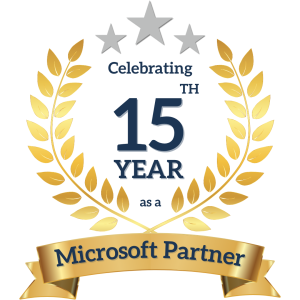Cloud Migration Blueprint: Strategies, Key Steps, Essential Azure Tools, and the Role of a Trusted MSP
Types of Cloud Migrations you can choose from:
- Datacenter migration: involves the process of moving data from on-premises servers and mainframes to a cloud provider’s servers, which are housed in secure, professionally maintained facilities. High-capacity networks are commonly used for this transfer. When networks aren’t sufficient, data can be moved to high-capacity disks or data boxes and physically shipped to the cloud provider for upload.
- Hybrid migration: Hybrid cloud migration involves keeping some resources on-premises while moving others to the cloud, creating a “hybrid cloud.” This approach helps maximize existing infrastructure and meet industry or government compliance requirements. Hybrid clouds also support cloud-to-cloud backup, where on-premises data is backed up to the public cloud for disaster recovery if the datacenter becomes inoperable due to events like fire, flood, or crime.
- Cloud migration: Cloud-to-cloud migration involves moving resources between public clouds, often due to mergers, acquisitions, or to leverage different platforms’ products, services, and pricing. Despite the complexity of using multiple clouds, central management tools make it possible to manage them from a single interface.
- App, database, and mainframe migration: Linux, SAP, SQL Server, and Windows Server are among the most migrated workloads, along with IBM and Unisys for mainframe migration.
Types of Cloud Migration Strategies
- Rehost: best for quick migration of existing virtual machines or applications because workloads are moved to the cloud with minimal changes. This strategy is best suited for fast migrations when you just want to get out of your data center. Tools that are used in Lift and Shift strategy include Azure Migrate, Azure Site Recovery, Azure VMware Solution.
- Refactor: we will make small changes to your app, so it works better in the cloud. For example, moving it into a container or using a managed service. This strategy is best suited for apps that need better performance or cost savings, but do not require a full rebuild. Tools that are used in Refactor include Azure App Service, Azure Kubernetes Service (AKS), Azure Container Instances.
- Rearchitect: we will either modify or rebuild applications to be cloud-native, often using microservices or serverless architecture. If yours is an app that is hard to scale or maintain in its current form, this strategy can optimize your IT performance. Azure Functions, Logic Apps, Azure API Management are used in this strategy.
- Rebuild: we will completely rebuild your app from the ground up using cloud tools like Azure App Services, Azure SQL, Cosmos DB, GitHub Actions for automation. This strategy is best used when the existing app isn’t worth fixing or can’t meet your needs anymore.
- Replace: in this strategy, you will not be using your old app and switch to a cloud-based tool or SaaS product. Best user case scenario includes common business apps that are easier to buy than build, for example, Microsoft 365 (email, Office), Dynamics 365 (CRM, ERP), Power BI (reporting).
- Hybrid: we will keep some things on-premises and move others to the cloud. This is helpful when you need to follow certain rules or aren’t ready to move everything yet. Tools in this strategy include Azure Arc, Azure Stack HCI, and Azure AD Connect.
Azure Migration Strategy: A Smart, Flexible Approach Backed by the Right Tools
Assessment and Discovery
Prioritizing Workloads
Designing for Security and Compliance
Leveraging Specialized Migration Tools
- Azure Database Migration Service (DMS):Automates and simplifies database migration to Azure SQL platforms, ensuring zero downtime and no data loss.
- Azure VMware Solution:Migrates VMware-based workloads to Azure without needing to rearchitect your infrastructure.
- Azure App Service Migration:Shifts web applications to Azure easily, improving performance, scalability, and reliability.
By using these tools strategically, we ensure that each workload moves to Azure efficiently, securely, and with minimal impact on your operations.
Cost Optimization from Day One
Post-Migration Optimization: Where the Real Value Kicks In
- Right-sizing: To ensure optimal performance and cost efficiency, we right-size VMs and storage based on actual usage. This way, you only pay for what you really need and avoid wasting resources.
- Automate patching and backups: We automate patching and backups using Azure Update Manager and Recovery Services to keep everything up-to-date and secure. This ensures your systems are always protected and reduces the risk of downtime.
- Leverage cloud-native tools:We leverage cloud-native tools like Azure Monitor, Log Analytics, and Defender for Cloud to strengthen your environment. Azure Monitor helps us track the health and performance of your applications and infrastructure in real time. Log Analytics allows to collect, analyze, and act on log data to quickly detect and resolve issues. Defender for Cloud adds an extra layer of protection by identifying threats and helping maintain strong security and compliance across your workloads.
- Modernization of apps: We modernize applications by utilizing Azure Kubernetes Service (AKS)or Azure App Services, ensuring they are future-ready and scalable. We also break down large applications into smaller parts (microservices), which helps us update, improve, and scale them faster and with less risk.
Ready to Migrate to Azure?
Recent Posts
Latest Blogs

Why Partnering with an Azure Expert MSP is Key to Cloud Success in 2025
Cloud adoption is growing fast—but without expert guidance, costs, security, and complexity can spiral. Learn why partnering with an Azure Expert MSP is the smartest move for businesses in 2025 to accelerate migration, optimize costs, and innovate securely.

Why Microsoft Fabric Is the Future of Data Analytics
Microsoft Fabric is revolutionizing data analytics by unifying data engineering, science, and visualization in one platform. Discover how Cloud 9 Infosystems helps enterprises modernize analytics with Fabric for real-time insights, AI, and agility.

The Future of Work: 5 Ways Microsoft Copilot Transforms Collaboration
Hybrid work is here, but meetings, emails, and silos slow teams down. Discover 5 ways Microsoft Copilot transforms collaboration—boosting productivity, cutting email overload, and uniting departments. Cloud 9 Infosystems helps you unlock its full impact.





 Visit India Website
Visit India Website